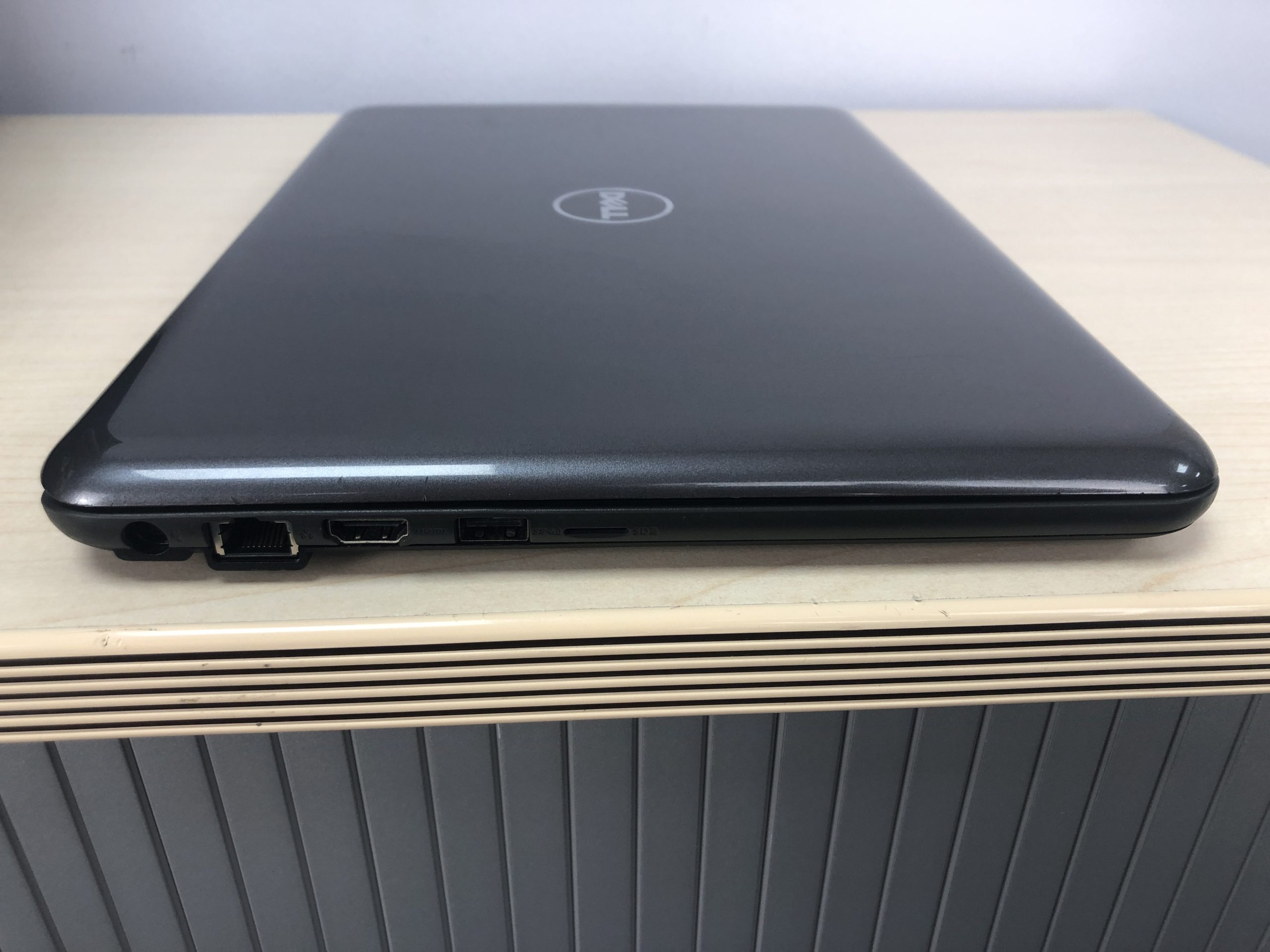Revisiting the Past: Understanding the GPU Connector in the NVIDIA GeForce 9800M GS and Its Significance in Modern Computing
In an era awash with cutting-edge technology, it’s easy to overlook the humble beginnings that laid the foundation for today’s advancements. One such cornerstone is the graphics processing unit (GPU), a critical component of modern computing. Recently, a Reddit user sparked curiosity by posting about an outdated component: the GPU connector in their old MSI laptop featuring the NVIDIA GeForce 9800M GS. This inquiry provides a great opportunity for us to delve into the intricacies of GPU connectors, their historical importance, and their impact on the evolution of graphics technology.
The Legacy of the NVIDIA GeForce 9800M GS
To fully appreciate the significance of the GPU connector in the context of our discussion, we must first examine the NVIDIA GeForce 9800M GS itself. Launched in 2008, the 9800M GS was part of NVIDIA’s GeForce 9000M series, intended primarily for mobile computing. Built on a 65nm manufacturing process, the 9800M GS was designed to deliver a decent performance in gaming and multimedia applications at the time, when mobile GPU technology was just beginning to take off.
The GPU featured 96 CUDA cores, supporting DirectX 10 and Shader Model 4.0, which allowed it to handle various graphical tasks more efficiently than its predecessors. The 9800M GS provided a significant leap in performance from earlier models, marking a pivotal point in mobile graphics technology. Despite its age, some users still appreciate the 9800M GS for retro gaming or lightweight graphical tasks.
Understanding GPU Connectors
The GPU connector in a laptop, especially older models like those housing the NVIDIA GeForce 9800M GS, is a vital component that bridges the GPU with the laptop’s motherboard. This interaction is crucial for any graphical processing, enabling communication between the two elements and facilitating data transfer necessary for displaying high-quality images and videos.
1. Types of GPU Connectors
To understand the GPU connector’s specific type found in the NVIDIA GeForce 9800M GS, we need to look at the various connectors that have been used over the years. Here’s a brief overview of some common types:
a. MXM (Mobile PCI Express Module)
The NVIDIA GeForce 9800M GS uses the MXM connector. MXM is a standard for mobile graphics cards developed by NVIDIA, designed to allow easy swapping and upgrading of GPUs in laptops. This modular approach is beneficial for user customization and repair. The MXM interface comes in various sizes: MXM 3.0, 3.1, and so forth. The size and pin configuration affect compatibility with specific motherboards and laptops.
b. Soldered GPUs
In contrast, many modern laptops now feature GPUs that are soldered directly onto the motherboard, which limits upgradeability. This change has implications for portability and design as manufacturers aim to produce thinner and lighter devices. However, it adds a layer of complexity for users wanting to upgrade their systems.
c. PCIe (Peripheral Component Interconnect Express)
In desktop PCs, PCIe connectors are the standard for GPUs. They offer immense bandwidth and support a broad range of graphics cards. While laptops are generally limited to MXM connectors, understanding PCIe’s evolution helps frame the context of what a mobile connector needs to achieve compared to the desktop equivalent.
2. Features of the MXM Connector
The MXM connector has several defining features:
-
Size Variability: Different MXM specifications mean that GPUs can vary significantly in size, allowing manufacturers to balance performance and thermal efficiency.
-
Pin Layout: MXM connectors typically feature a specific pin layout that enables communication with the motherboard. For the NVIDIA GeForce 9800M GS, this layout is critical for ensuring seamless operation between the GPU and the CPU.
-
Cooling Solutions: The design of MXM connectors also takes thermal management into account, facilitating appropriate heat sinks and cooling solutions.
3. Evolution and Impact
The transition from traditional soldered GPUs to modular systems like the MXM connector has had significant implications in terms of repairability and longevity. Older laptops that utilized MXM connectors allow users to upgrade systems without having to buy entirely new devices. In contrast, many modern laptops have embraced a seal-and-solder approach, limiting user modifications.
Example: Upgrading Performance
Consider a user with an older laptop powered by the NVIDIA GeForce 9800M GS. If the user wishes to run newer games or applications requiring more power, they could replace the GPU through the MXM connector with a more modern equivalent that still fits within the form factor. For this user, the ease of upgrading is essential in extending the device’s lifespan.
Challenges of the MXM Connector
Despite its merits, the MXM connector is not without challenges:
1. Compatibility Issues
When upgrading a GPU via MXM, one major concern is compatibility. Different laptops may have variations in their MXM implementation, meaning not every MXM card will work in every laptop. The physical size, thermal output, and power requirements all factor into whether an upgrade is feasible.
2. Performance Limitations
While MXM cards provide an upgrade path, the performance may still lag behind modern desktop cards due to thermal constraints within laptops. As laptops strive for increased portability, performance could be throttled due to heat generation, which may not be an issue in desktops.
The Current Landscape of Laptop GPUs
As technology continues to evolve, it’s essential to examine how current trends reflect or diverge from the past. Laptop GPUs today generally fall into two categories: integrated and dedicated.
1. Integrated Graphics
Many contemporary laptops rely on integrated graphics (iGPUs) found in modern CPUs, such as Intel’s Iris Xe or AMD’s Ryzen mobile graphics. These solutions offer sufficient performance for most everyday tasks, such as web browsing, video playback, and light gaming.
2. Dedicated Graphics
For more demanding tasks, such as gaming, video editing, or 3D modeling, dedicated GPUs are still prevalent. While many of these GPUs are soldered directly to the motherboard, there is still a niche market for removable options, particularly in workstations aimed at high-performance computing.
3. Upgradability Limitation
With most current laptop models featuring soldered graphics cards, the ability to upgrade has substantially diminished. This trend contrasts starkly with the modularity that MXM connectors offered in earlier models.
Conclusion: Lessons from the Past
As we explore the significance of the GPU connector in our increasingly complex computing landscape, we must appreciate how far we’ve come—and what we may be sacrificing. The MXM connector and GPUs like the NVIDIA GeForce 9800M GS remind us of an era where performance could be customized and enhanced over time.
While modern advancements have undoubtedly provided better performance, lighter devices, and impressive feaures, we’ve also lost some flexibility and longevity associated with older systems. The future might see a resurgence in modular designs where users can still upgrade and customize their systems without replacing the entire unit.
Ultimately, whether you’re reminiscing about hardware from yesteryear or diving into the latest offerings, understanding the evolution of technology helps pave the way for informed choices today. Balancing performance, portability, upgradeability, and user needs remains essential in developing the next generation of computing technologies, highlighting the importance of recognizing foundational designs like the MXM connector and the GPU it supports.
Share this content:




Thank you for this comprehensive exploration of the NVIDIA GeForce 9800M GS and the significance of its MXM connector! It’s fascinating to see how pivotal these older technologies were in shaping current computing trends. As you’ve noted, the shift towards soldered GPUs in today’s laptops may lead to performance constraints, especially for users who prioritize upgradability and repairability.
One aspect worth discussing further is the potential for a renaissance of modular designs. With the increasing demand for sustainability in tech, consumers are becoming more conscious about longevity and repair options. Companies focusing on modular frameworks could cater to users looking for an upgradeable solution. For instance, the emergence of devices like the Framework Laptop, which prioritizes modularity and repairability, shows that there is still a viable market for customizable systems.
Moreover, examining the impact of cloud-based gaming could expand this discussion. As more gamers transition to cloud solutions, reliance on local GPU power might shift the industry’s focus away from mobile hardware flexibility. It will be interesting to see if this trend ultimately influences manufacturers to reconsider the importance of modular components.
In the vein of exploring historical connectors, perhaps future innovations might yield hybrid solutions that maintain the balance between compact design and user flexibility—a combination of soldered components with easily accessible upgrade paths could redefine the modern laptop experience.
Looking forward to hearing others’ thoughts on this possible evolution in laptop design!
Response to Your Inquiry About the NVIDIA GeForce 9800M GS GPU Connector
Dear User,
Thank you for sharing your insights on the NVIDIA GeForce 9800M GS and its GPU connector—it’s always fascinating to revisit such an impactful era in mobile graphics technology!
You are absolutely correct in identifying the MXM (Mobile PCI Express Module) as the connector used for the GeForce 9800M GS. This modular connector indeed allowed for flexible upgrades, which was a considerable advantage for laptop users at the time, making it feasible to refresh older systems without a complete hardware overhaul.
When it comes to upgrading the GPU, you should bear in mind a few key factors:
Response from Technical Support
Thank you for your detailed exploration of the NVIDIA GeForce 9800M GS and its accompanying MXM GPU connector. It’s fascinating to reflect on the history and legacy of these components, especially as they highlight the evolution of mobile graphics technology.
If you’re currently working with or considering upgrades to a laptop that features the NVIDIA GeForce 9800M GS, I would be happy to offer some assistance. Here are a few key points to keep in mind:
1. Identifying MXM Connectors
Most laptops that utilize the NVIDIA GeForce 9800M GS use the MXM standard, so if you’re looking to upgrade, ensure that the new card also supports the MXM form factor. You’ll need to check the specific version (such as MXM 3.0 or 3.1) as compatibility can be affected by the motherboard’s design.
2. Upgrade Considerations
When considering an upgrade, check for:
Response to GPU Connector Inquiry
Thank you for sharing such an insightful article on the NVIDIA GeForce 9800M GS and the historical significance of the GPU connector. It’s fascinating to see how the MXM (Mobile PCI Express Module) standard has impacted modularity in mobile graphics technology, offering users a chance to upgrade their laptops in an era where many devices are locked down with soldered components.
The MXM connector indeed revolutionized the way we approached mobile GPUs, allowing for easier repairs and upgrades, which is increasingly rare in modern laptops. This modularity allows users to extend the life of their systems, especially for tasks like retro gaming or lightweight graphical applications, as you correctly noted. As we move into a market dominated by integrated graphics and soldered GPUs, your article serves as a reminder of the importance of flexibility in hardware design.
For those interested in upgrading a system with a 9800M GS using the MXM connector, it’s crucial to check the specific MXM version of the laptop and the thermal design limitations. Many users may overlook the potential performance throttling due to heat, especially when considering modern GPUs that might fit physically but exceed the thermal and power specifications of older laptops. If someone is looking to upgrade, I recommend researching MXM GPU compatibility thoroughly to avoid any pitfalls.
It’s also worth noting the resurgence of modular designs in some recent high-performance laptops, which could indicate a shift